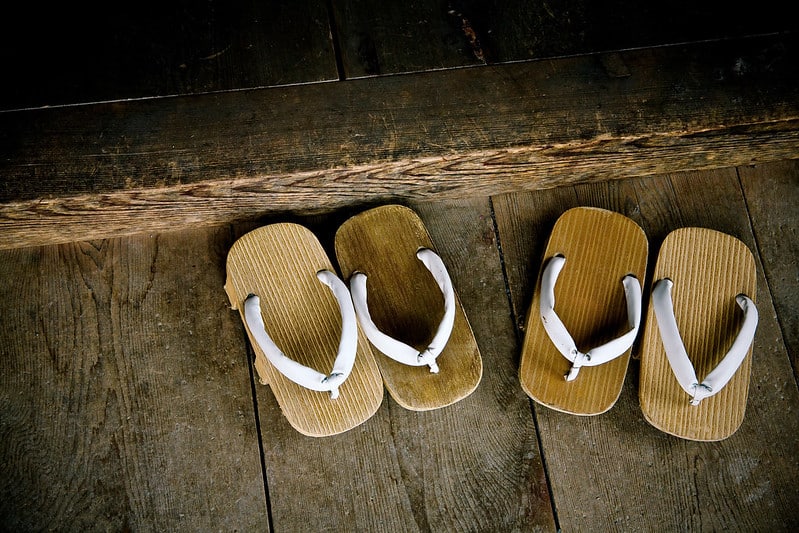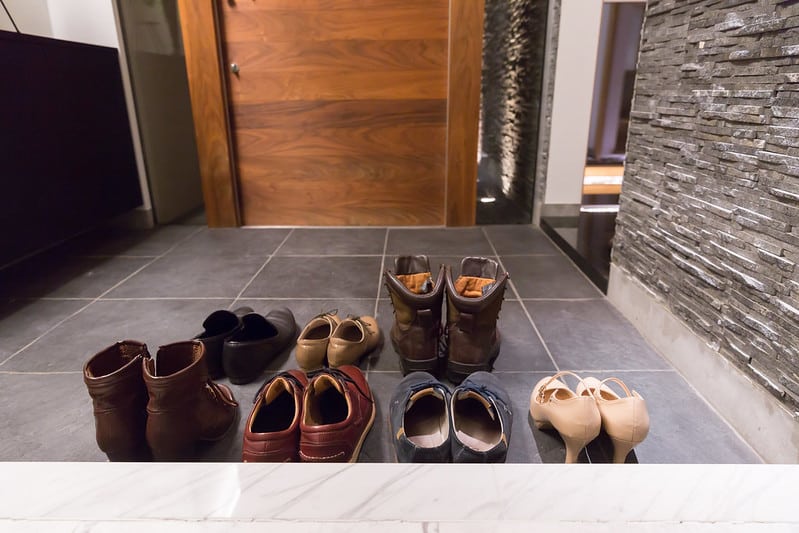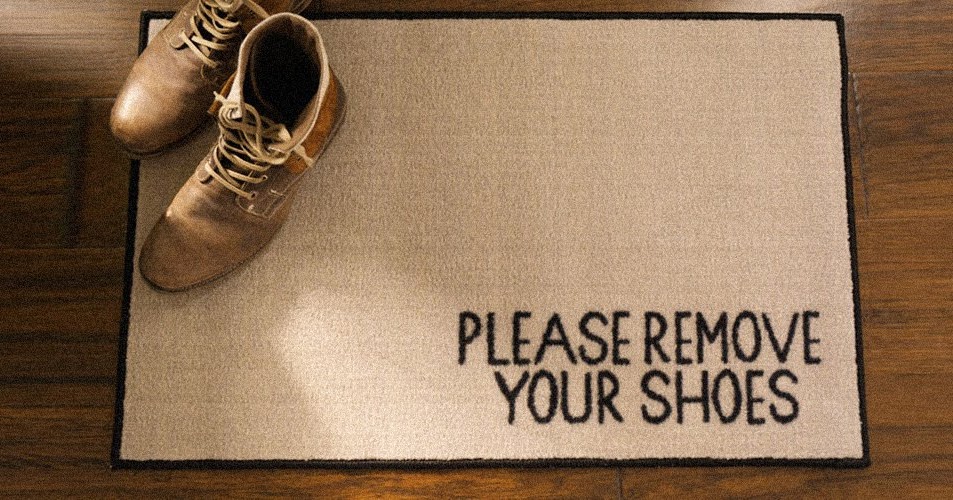The practice of removing shoes before entering a home or sacred space is a custom deeply rooted in various cultures around the world. While it may seem simple, its reasons can be complex and multifaceted, often reflecting a society’s values, beliefs, and historical context. Understanding these cultural nuances is not just a matter of etiquette but also a way to foster respect and open dialogue between different communities. This article aims to delve into the cultural, historical, and even psychological reasons behind the practice of shoe removal. You will explore how this tradition varies from Asia to the Middle East, and even in Western societies, to gain a comprehensive understanding of this widespread custom.
Contents
Historical Context of Shoe Removal

Removing shoes has ancient origins, tracing back to various civilizations that considered the ground inside homes or temples sacred. In ancient Japan, for example, the tatami mat flooring in traditional homes was highly valued, and walking on it with shoes was considered disrespectful. Similarly, in ancient Middle Eastern cultures, removing shoes was a sign of humility and respect when entering sacred spaces.
Over time, the practice has evolved but holds cultural and sometimes religious significance. In modern societies, the reasons for shoe removal can range from cleanliness to spirituality. However, the core idea often remains the same: the act symbolizes a transition from the outer world to an inner sanctum, be it a home or a place of worship.
Asian Cultures and Shoe Removal

In Japan, removing shoes before entering a home is deeply ingrained in the culture. It’s not just about cleanliness; it’s a ritual that signifies leaving the outside world and its troubles at the door. The Japanese even have a specific term, “Genkan,” for the area where shoes are to be removed. This practice extends to certain traditional accommodations and temples, emphasizing its widespread cultural importance.
China, too, has a long history of shoe removal, although the practice varies between regions and generations. Removing shoes is common in traditional Chinese homes, especially in rural areas. However, in modern urban settings, the practice is less consistently observed. Still, the underlying reasons often relate to respect for the home as a private, clean space separate from the chaos of the outside world.
Middle Eastern Practices

In Islamic tradition, the removal of shoes holds significant religious importance, especially when entering mosques. This practice is derived from the belief that cleanliness is close to godliness. Removing shoes ensures that the prayer area remains clean and pure. In many Muslim households, this religious practice extends to the home, emphasizing the sanctity and cleanliness of personal living spaces.
However, it’s worth noting that the practice is not limited to Islamic cultures in the Middle East. In countries like Israel, for example, the custom can vary widely depending on individual or family preferences. Some Jewish households adopt the practice for reasons ranging from cleanliness to neighboring cultures’ influence. Overall, the Middle East offers a rich tapestry of customs and beliefs related to shoe removal, each with its underlying principles.
Western Perspectives on Shoe Removal

In North America, removing shoes is less uniformly observed than in Asian or Middle Eastern cultures. While some households insist on it for cleanliness, others consider it optional. However, the practice has been growing in popularity, partly due to the influence of multiculturalism. As more people become aware of the reasons behind shoe removal in different cultures, the practice is becoming more common in North American homes.
In Europe, the practice varies widely from country to country and even from household to household. In Scandinavian countries, for example, removing shoes is quite common, especially during winter, to keep homes clean. In contrast, the practice is less prevalent in countries like France or Italy. The variations often reflect historical influences, climate conditions, and cultural attitudes toward private and public spaces.
African and Latin American Practices

Shoe removal can be tied to traditional beliefs and customs in various African cultures. In some communities, wearing shoes inside someone’s home is considered disrespectful, as it is seen as bringing in dirt or bad energy. The practice also has spiritual undertones in certain African societies, where the home is viewed as a sacred space that should be kept pure.
Latin American practices regarding shoe removal are diverse and often influenced by a mix of indigenous and European customs. In some regions, removing shoes before entering a home is common, while in others, it is not a widespread practice. The reasons can range from practical considerations like cleanliness to more symbolic gestures of respect for the host.
Psychological and Health Reasons

Beyond cultural and religious reasons, there are psychological and health benefits to removing shoes when entering a home. From a hygiene perspective, shoes can carry a variety of germs and dirt from the outside world. Removing them helps to maintain a cleaner living environment, which can be particularly beneficial for households with small children or individuals with allergies.
The act of removing shoes can also contribute to mental well-being. It serves as a physical marker that signifies the transition from the public sphere to the private, helping individuals mentally separate their work or social life from their home life. This can create a sense of comfort and relaxation, which is beneficial for mental health.
Controversies and Criticisms

The practice of shoe removal is not without its controversies and criticisms. One debate centers around the issue of cultural appropriation. As the custom becomes more popular in Western societies, some argue that adopting this practice without understanding its cultural significance can be problematic. However, others contend that cultural practices can be shared respectfully, especially when they promote positive values like cleanliness and respect.
Another criticism focuses on the inconvenience that the practice may cause. For instance, some people find it cumbersome to remove and put on shoes frequently, especially in social settings or during events. Despite these criticisms, the practice continues to be widely observed, indicating its enduring cultural and practical relevance.
Globalization and the Future of Shoe Removal

Globalization has had a complex impact on the practice of shoe removal. On the one hand, blending cultures has led to greater awareness and adoption of the custom in places where it was not traditionally observed. On the other hand, modern lifestyles and the fast pace of urban living have led some to abandon the practice, viewing it as outdated or impractical.
Looking ahead, it’s likely that the practice will continue to evolve. As homes become more multicultural and people become more health-conscious, the reasons for removing shoes may expand beyond cultural and religious norms to include broader considerations like hygiene and mental well-being.
The Bottom Line
Removing shoes before entering a home or sacred space is a rich and varied tradition that spans multiple cultures and generations. From the ancient civilizations that first adopted this custom to the modern societies that continue to observe it, the reasons behind shoe removal are as diverse as they are meaningful. Whether rooted in religious beliefs, cultural values, or psychological and health benefits, this simple act is a universal symbol of respect and reverence for sacred spaces. Understanding the cultural nuances behind shoe removal fosters global respect and opens the door—quite literally—to a world of shared human experience.